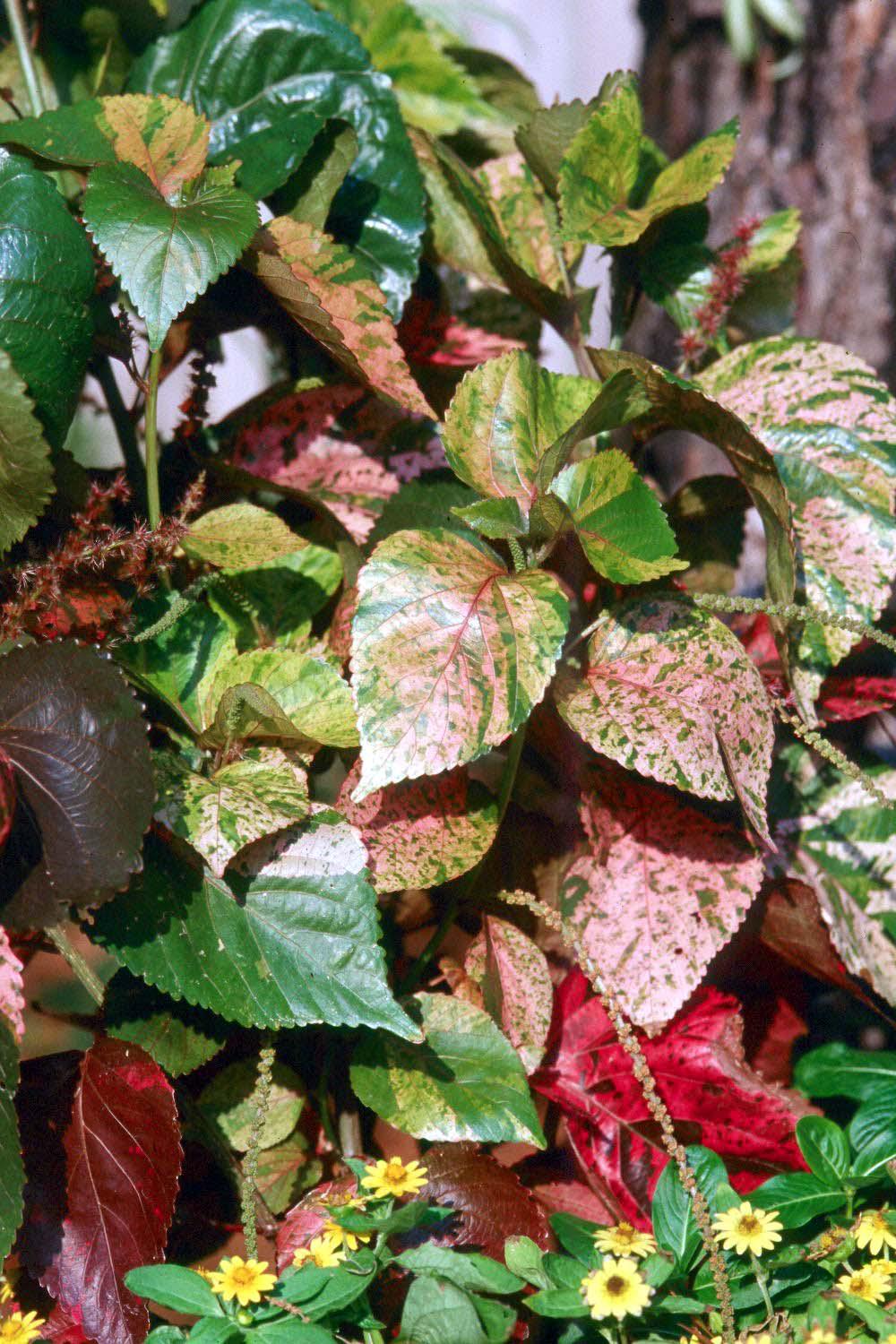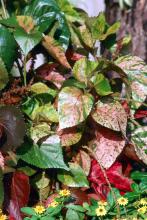Information Possibly Outdated
The information presented on this page was originally released on September 3, 2001. It may not be outdated, but please search our site for more current information. If you plan to quote or reference this information in a publication, please check with the Extension specialist or author before proceeding.
Copper is valuable in good landscapes
By Norman Winter
MSU Horticulturist
Central Mississippi Research & Extension Center
Copper is worth as much as gold in landscapes, especially now through fall. Some of the hottest commercial landscapes are using the copper plant and looking really good.
Southern gardeners have grown the copper plant for decades, but lately it has taken a backseat to the beautiful sun coleus. Despite my affection for the coleus, I do believe the copper plant has attributes that make it worthy of having around year after year.
The cooper plant has its origins in the Pacific islands. It is in the Euphorbia family, making it related to the poinsettia, croton and chenille plant. In the South Pacific, they reach 10 to 15 feet in height. Around here, we expect these annuals to top out at 3 to 4 feet, although I have seen them close to 6 feet tall.
Plant in full sun to achieve the most spectacular color. In the bright light, their copper-colored foliage &endash; some of it marbled red, pink and purple &endash; will rival the croton or coleus.
You must have well-drained soil for the copper plant. If your drainage is the least bit suspect, incorporate several inches of organic matter while preparing the bed. These plants grow quite large, so space them adequately. At 18 inches, they will quickly form a hedge-like look. Depending on the look you seek, you may wish to space them 24 to 36 inches apart.
The copper plant responds well to a mid-summer pinching or pruning that encourages lateral branching and a bushier appearance. To reach the maximum height potential, side dress monthly with light applications of a slow release, balanced fertilizer.
Copper plants are great grouped in clusters among evergreen shrubs. Their bold copper colors make a striking contrast to the dark green, but some of the showiest beds are created by combining them with ornamental grasses. My first choice is Hameln, a dwarf fountain grass that forms coppery-pink flower spikes on 24-inch tall clumps. Purple fountain grass and Karl Foerster, a feather reed grass, also make nice companion plants.
They combine well with flowers, too. Marigolds in almost any size or color look like they were made to be grown with copper plants. New Gold lantana, Melampodium and narrow leaf zinnias &endash; all former Mississippi Medallion winners &endash; also work quite well with copper plants.
One beautiful companion planting you almost have to see to believe groups the plumbago with the copper plant. In the past couple of years, plumbago has been used in local landscapes, thanks for the most part to a new series called Escapade. The light blue flowers of the Plumbago and the bronze leaves of the copper plant make a unique combination that is almost indescribable. Try copper plants in large containers, too.
Copper plants are often sold generically, which is probably okay, but if you see Mardi-gras, Moorea, Tahiti or Tri-color, you know you are getting the best varieties. A dwarf selection called Godseffiana seems much harder to find.
Copper plants are pretty easy to root from cuttings if you want to try to over winter a few to be planted next spring after the last frost. But even if you buy it every year, the copper plant is worth every penny spent on this beautiful annual.



